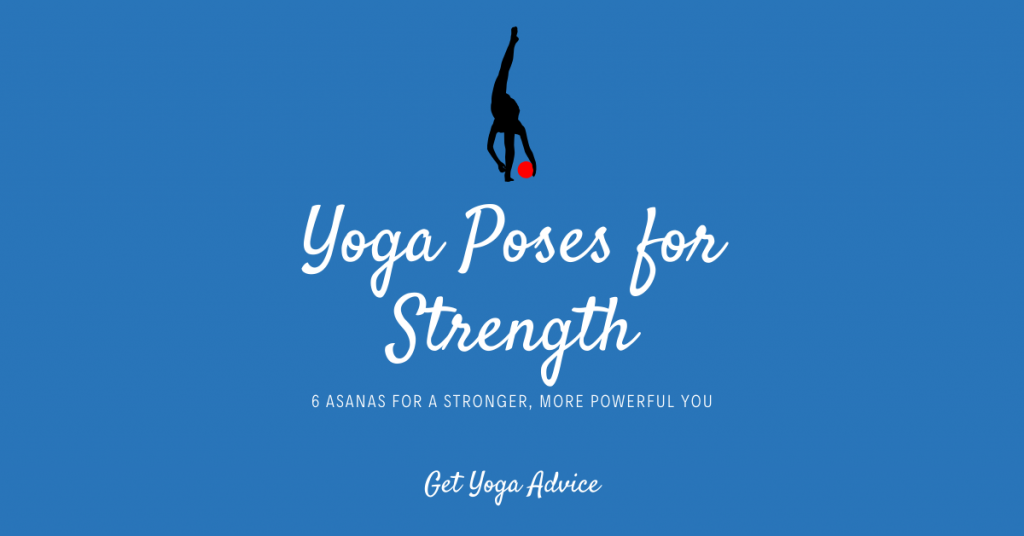Did you know that a lot of athletes practice yoga as a way to build strength and flexibility?
While you may be wondering why athletes would hit the mat to improve their game, there is great benefit in practicing yoga poses for strength. We’re going to show you why even major athletes turn to yoga to build strength as well as six asanas you can do at home for a stronger, more powerful you.
Contents
Can Yoga Actually Build Muscle?
Due to the nature of yoga asanas – slow, controlled movements, which often focus on stretching – it can be hard to believe that yoga can build muscle. While those who are not familiar with the benefits of yoga may consider it “glorified stretching”, yoga is so much more than that when it comes to the effects it can have on your body.
You’ll be hard-pressed to find a single asana that doesn’t target your muscles in some way as well as fire up your core and increase your strength. Of course, for this to happen, it’s important to make sure that you’re performing your poses correctly.
Bonus points if you couple yoga with a program like Starting Strength.
Yoga Poses for Strength – 6 Asanas for a Stronger, More Powerful You
Let’s take a look at six yoga poses that you can do from home. Although some of these poses may be challenging, you can use the aid of the wall or a chair to make them easier. Eventually, you will develop enough balance and strength to require no additional support!
1. Dolphin Plank Pose
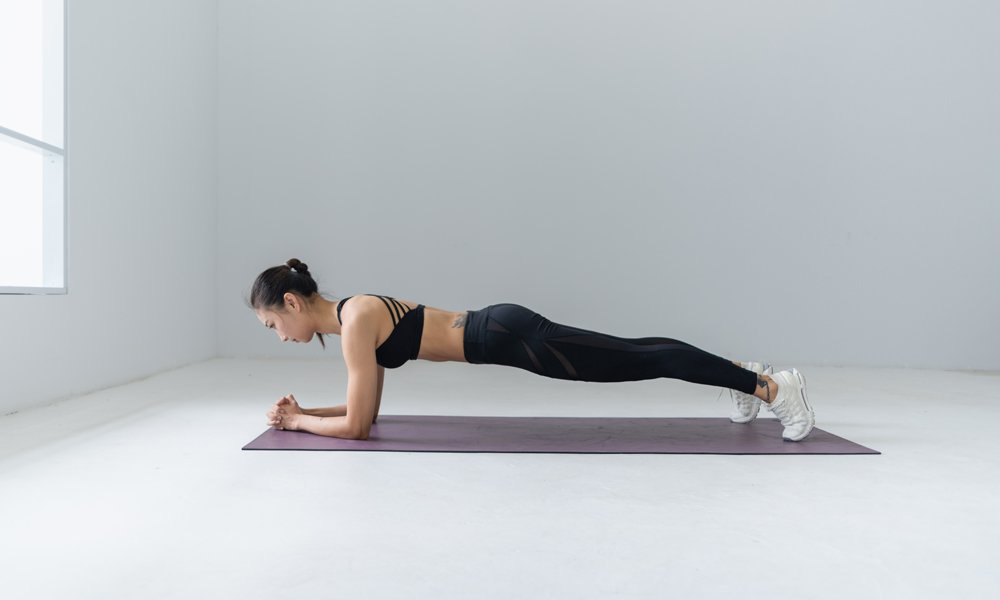
If you’ve ever tried a Dolphin Plank (otherwise known as a forearm plank), you know this pose requires a serious amount of strength. The reason why this pose can initially feel so difficult is that it builds strength through the resistance of your body’s own weight. The Dolphin Plank is great for building bone density as well as aiding in headache relief and fatigue, curing insomnia, and improving anxiety and depression.
How to:
- Begin on your hands and knees and lower your forearms to the mat, one at a time.
- Stand on your toes and walk your feet back until your shoulders are over your elbows with your torso being parallel to the mat.
- From here, press your forearms and elbows into the mat.
- Before holding this pose, make sure your tailbone is lengthened and your heels stretched, with your front thighs lifted.
- Stretch your head away from the shoulders, keeping your gaze on the mat.
- Breathing slowly, hold this pose for 20 to 30 seconds, and repeat up to three times.
2. Chair Pose
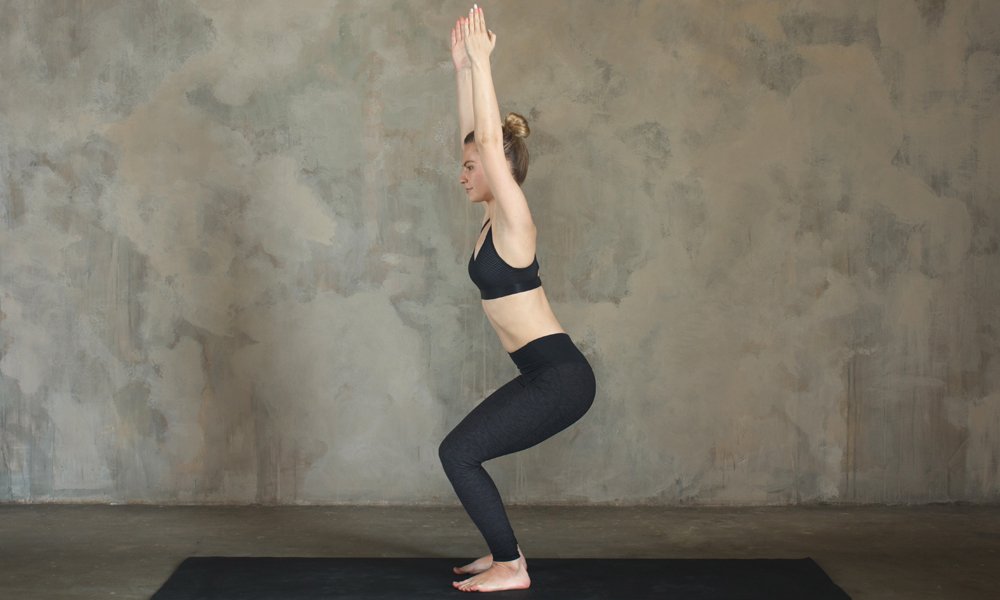
While Chair Pose is a relatively easy pose to master for even beginner yogis, it’s incredibly effective in strengthening your thighs and quads. This is a standing pose that essential tones your entire body. Chair Pose is therapeutic for flat feet and also tones your digestive organs and heart.
How to:
- Stand straight on your mat, feet slightly wider apart than hip length, your arms at your sides.
- Inhaling, lift your arms straight up next to your ears, keeping them parallel with your wrists and your fingers straight and long.
- Your spine should be neutral and your shoulders down.
- As you exhale, bend your knees with your thighs and knees parallel from each other.
- Your body will essentially be in the same position as if you were able to sit down – lean your torso forward, creating a right angle with the tops of your thighs, with your neck and head being in line with your arms and torso.
- Hold this asana for 30 seconds to one minute
3. Three-Legged Dog Pose
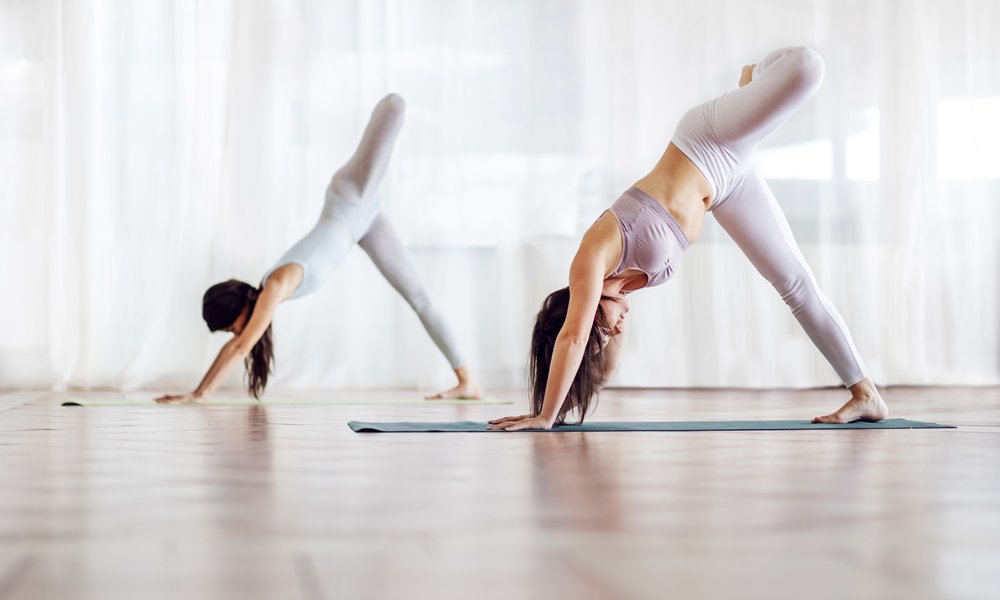
Want to work on your core strength? Look no further than the Three-Legged Dog Pose. This asana builds strength through your core and arms while stretching your entire body. It also aids in energizing and rejuvenating the nervous system and relieving anxiety, insomnia, back pain, and poor digestion.
How to:
- Begin on your hands and knees, shoulders stacked over your wrists and your hips stacked over your knees – this is called Tabletop Pose.
- Tuck your toes under and begin to extend and straighten the legs, lifting your hips upwards towards the ceiling.
- Straighten your arms, keeping them in line with your ears and push your palms into the ground – you will now be in Downward Facing Dog.
- Inhale and extend your right leg up and then back, lifting towards the ceiling.
- Keep in mind that it’s important to start slow and ease into the position, rather than lifting as high as you can all at once.
- Keep the hips level and the right foot flexed, toes pointing towards the ground.
- Stay in this pose for 20 to 30 seconds or five to 10 breaths and exit carefully, reverting back to Downward Facing Dog
4. Bridge Pose
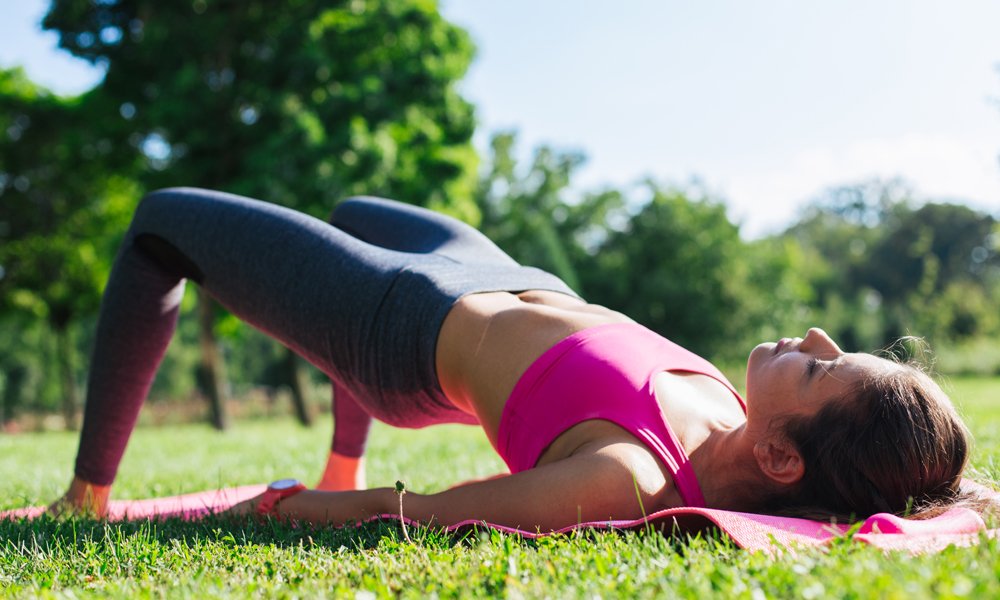
Bridge Pose is great for increasing flexibility and decreasing pain in the lower back. But did you know it’s also excellent for improving strength? Bridge Pose strengthens and stretches your ankles, legs, glutes, back, neck, shoulders, and spine as well as opening up your chest and hip flexors. It also stimulates your internal organs and improves sleep and digestion.
How to:
- Lie on your back, bending both knees and planting your feet flat on the floor, making sure your knees are hip-width apart.
- Your arms should be straight down on your sides, palms facing down, fingertips reaching towards the heels.
- Pressing your feet into the floor, lift your hips up on the inhale and roll your spine off the floor.
- Put pressure on the arms and shoulders to lift your chest up and clasp your hands together underneath your body so you’re now just putting pressure on your shoulders.
- Engage your entire body in this pose to lift your hips higher.
- Breathe slowly and hold for 20 to 30 seconds
5. Mountain Pose
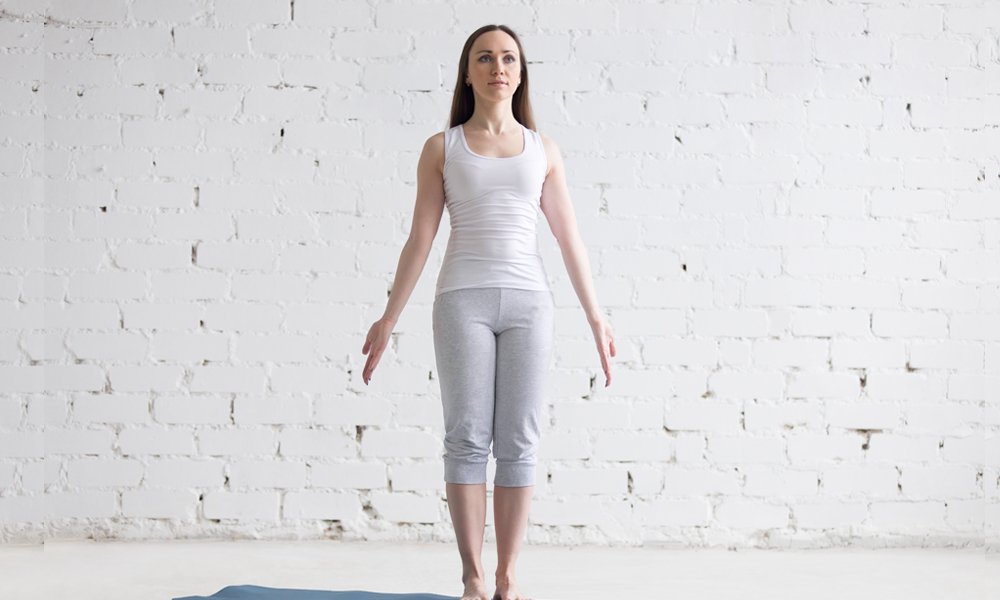
Although Mountain Pose looks incredibly simple, it is the foundation for all standing yoga poses and helps to build strength in the lower body. Make sure you take your time through this pose and allow yourself to feel the benefits of each step. This is also a great time to take stock of how your body’s feeling in terms of any aches and pains and to prepare yourself for your next asana.
How to:
- Stand tall, pressing all four corners of your feet into your mat, keeping them hip-width apart.
- Drop your arms alongside your body and allow them to lengthen, palms facing forward.
- Draw your shoulders back and focus on elongating your spine, all the way from your heels to your neck to the crown of the head.
- Allow yourself to be aware of your posture, making sure that you’re standing up straight and that your body feels aligned.
- Breathe slowly in this position for a minimum of 30 seconds or allow yourself to stay in this position for up to 2 minutes.
6. Crow Pose
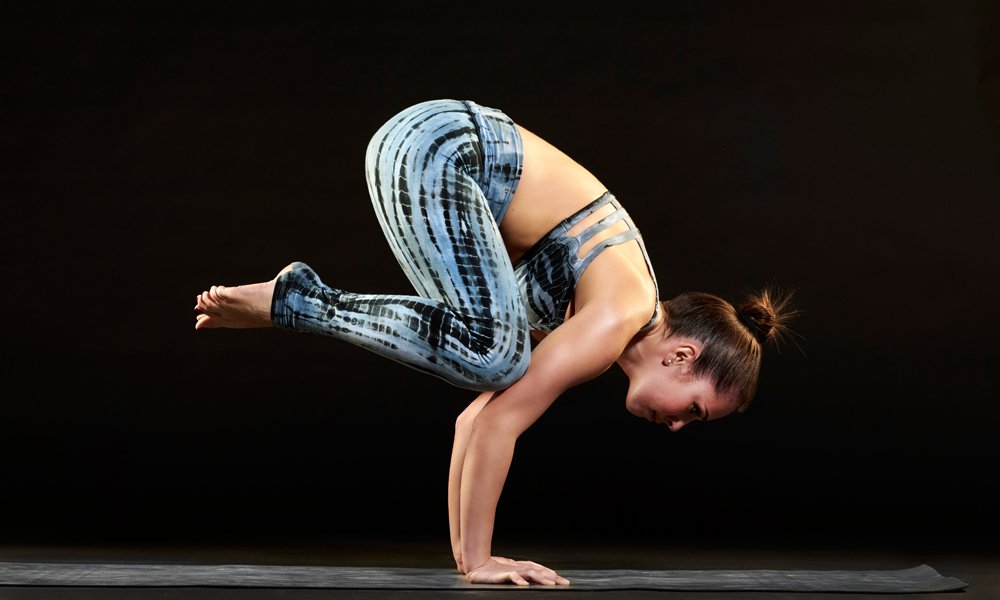
We tend to associated Crow Pose with those who have seriously mastered their yoga practice – or at least those who have enough upper body strength to lift their own weight. This pose isn’t easy and requires you to already have a certain amount of strength and balance to master it. When mastered, it helps continue to strengthen your arms, shoulders, and wrists as well as giving overall tone to the rest of your body.
How to:
- Fold forward from a standing position, placing your hands firmly on the mat in front of your feet, making sure that they’re shoulder-distance apart.
- Lift onto your toes and press your knees into the back of your triceps.
- Bend your elbows slightly and then bend your knees, one at a time.
- Press your knees into the back of the upper arms, providing a sort of a cradle.
- Shift your body forward so that your legs and knees are off the ground – you should be resting entirely on your hands, using your fingers to keep balance
- Try to hold for 10 breaths or 30 seconds.
Yoga Poses for Strength: Why We Recommend Them
Whether you’re an athlete or someone who is looking to be a healthier, stronger you, we definitely recommend yoga. Practicing yoga has seemingly endless benefits that cannot be replicated by any other form of exercise.
Consider adding yoga to your strength training routine to strengthen your entire body while receiving amazing health benefits. You may not feel up to tackling all 6 yoga poses for strength covered here at first, but it gives you something to work towards and mark your progress by.

